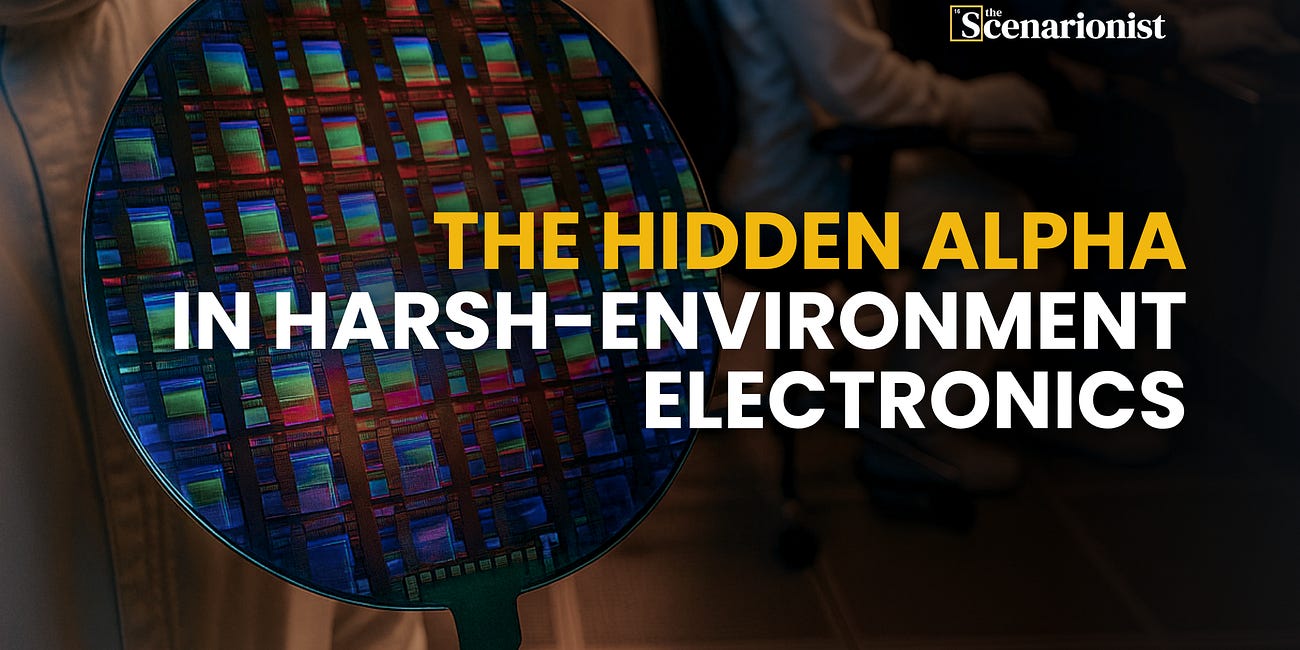⚛️ Advanced Fission Lists on Nasdaq; 🌋 Geothermal Advances; 🔐 Photonic Security Hardens; 🛰️ Orbit Becomes a Factory; 🔋 Sodium-Ion Scales & more | Deep Tech Briefing #85
Weekly Intelligence on Deep Tech Private Markets.
Welcome back to Deep Tech Briefing — the weekly space by The Scenarionist where we analyze and discuss the key events of the week shaping Deep Tech Private Markets.
In Today’s Briefing:
Lite Edition (Free)
Roundup
Interesting Reading
Full Edition (Premium)
The Big Idea:
IMSR Goes Public, Time Gets a Price.
What Terrestrial’s listing says about advanced nuclear, risk, and the deep-tech market.
The Key Updates:
Humanoids at home, sovereign photonics, orbital fabs, NVQLink quantum—and baseload for AI-scale loads.
A week when autonomy, manufacturing sovereignty, and real-world energy all locked into a production context.
Signal in the Data:
During the biotech funding slump, corporate venture showed up.
CVCs bridged critical experiments and stabilized timelines as public windows stayed narrow.
Deep Tech Power Play:
From Italy’s R&D windows to DOE–AMD supercomputers — the new playbook is funding + de-risking + demand, compounding advantage in AI, energy, hardware, and cultivated meat.
Roundup
Dear Friends, welcome back to Deep Tech Briefing!
This week’s signal is industrial pragmatism: fund what matters, de-risk early, and anchor demand at home. Energy sets the tone. Baseload and high-temperature heat are now treated as core inputs for data centers and industry, not as marketing lines.
Modular units, advanced geothermal, and grid-scale storage are converging on clear service levels—firm capacity, auditable telemetry, and maintenance plans that fit standard utility schedules.
On the factory floor, the gains come from tighter feedback loops. AI-assisted design flows into modular hardware, cutting weeks off commissioning.
Real performance in compute is decided less by peak chip speed and more by packaging, memory proximity, and verification—the plumbing that delivers throughput in production racks.
Autonomy is getting operational. Programs are judged by uptime and mean time between failures (MTBF), by route economics, by rescue frequency, and by low-latency control that keeps people and assets safe.
Maritime and municipal deployments scale best when built in conventional yards and civic systems, then paired with certified autonomy—not custom one-offs.
In orbit, space manufacturing now runs like an operations loop—build → fly → measure → refly—with insured return-to-Earth turning cadence into a budgetable line item.
Policy is acting like a balance sheet. Public–private deals in energy and compute price the time to permit and build, while keeping upside if milestones hit. Emergency-response drone playbooks are becoming templates for beyond-visual-line-of-sight (BVLOS) operations.
National and regional R&D programs are steering capital toward enabling technologies that strengthen domestic supply chains.
In parallel, corporate venture has been the steady underwriter while public markets stayed narrow—keeping critical experiments on track and teams focused on evidence, not hype.
You’re reading the Lite edition of Deep Tech Briefing. For a full view of the week’s key developments across new breakthroughs, permits, industrial partnerships, IPO signals, and policy shifts shaping the deep tech landscape, unlock the full version here.
Enjoy the read!
- Giulia
✨ For more, see Membership | VC Guides | Insights | Rumors | Exit
The Hidden Alpha in Harsh-Environment Electronics | The Scenarionist
Electronics that survive heat, vibration, and radiation. Here, we’ll explore how extreme-resilience technologies—from heat-proof sensors to radiation-shielded computing—can unlock high-growth markets across space, defense, energy, and more.
🔶 Interesting Reading:
Bill Gates’ three tough truths about climate Gates Notes — Sobering math, pragmatic optimism—useful for boards calibrating ambition vs. physics.
VCs urge founders to raise before the AI bubble deflates Sifted — Runway insurance while multiples stretch and bidding wars rage—horizontal apps most exposed.
Cleantech isn’t having a great year Crunchbase News — Funding stays soft overall—even as fusion, storage and recycling post outlier rounds.
OpenAI’s trillion-dollar tease: IPO groundwork, infra hunger, and the new cap table math Reuters — Early filings chatter, $20B run-rate, nonprofit governance tweaked—window shopping or the start of AI’s mega-cap era?
America’s next frontier: compete in deep tech (Utah as testbed) Yahoo News (Opinion) — State-level playbooks + industry pull = national edge—will governors move faster than DC?
Meet Europe’s biggest deeptech investor (hint: it’s not a VC) Sifted — The EIC Fund’s catalytic cheque-writing keeps labs-to-market pipes open while private capital hesitates.
Beyond the buyout: will India’s $12B bet unlock deep-tech? DealStreetAsia — A government FoF to crowd in private risk—semis/space/defense the early winners if execution holds
Deep-tech startups seek tax clarity in India Rediff Money — Policy plumbing matters: incentives and definitions could free up domestic LP capital.
AI is about to supercharge cyberattacks Axios — Automated kill chains, faster lure-gen, millisecond response races—defenders bet on “our bots vs theirs.”
Solo-GP season: a new fund hunts for one-person VCs WSJ — FoF capitalizes on AI-tooled diligence and niche sourcing—agility over committees as an LP thesis.
Nuclear testing back on the table in the US BBC News — A political jolt with long supply-chain ripples—detectors, materials, and test-range tech move from niche to need-to-have.
SpaceX is set to land a $2B Pentagon satcom deal WSJ — LEO tracking for “Golden Dome” inches from theory to procurement—speed, cost, and the single-vendor question collide






